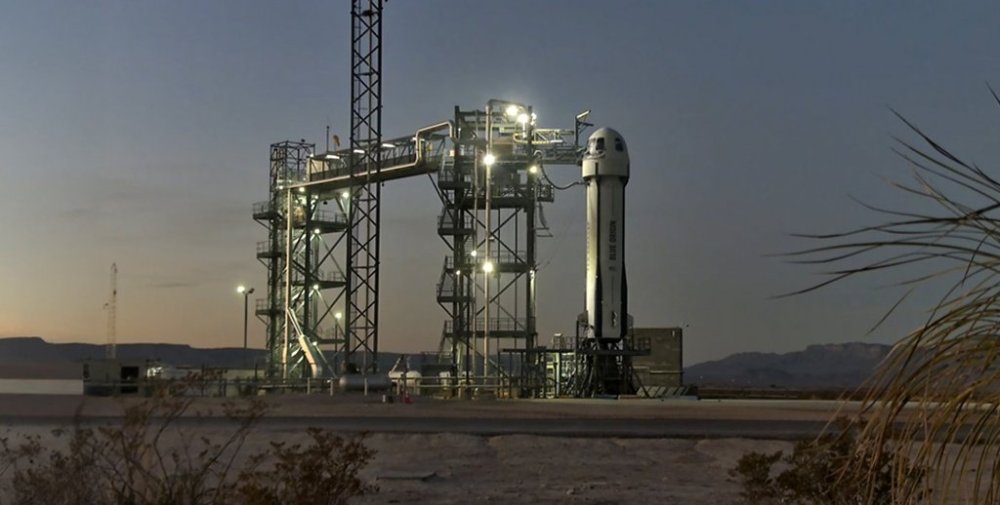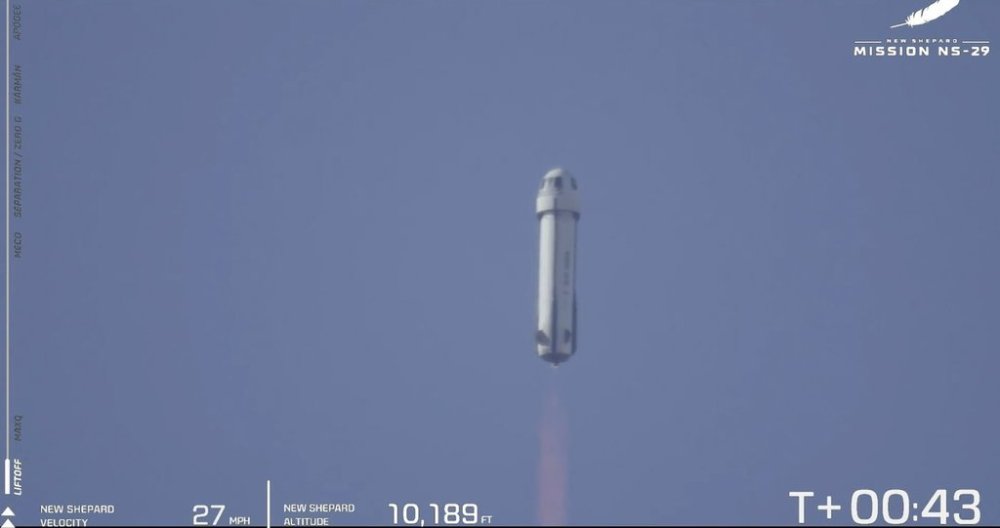Jeff Bezos’ Blue Origin mimics the moon’s gravity for NASA experiments during spaceflight
Advertisement
Read this article for free:
or
Already have an account? Log in here »
To continue reading, please subscribe:
Monthly Digital Subscription
$0 for the first 4 weeks*
- Enjoy unlimited reading on winnipegfreepress.com
- Read the E-Edition, our digital replica newspaper
- Access News Break, our award-winning app
- Play interactive puzzles
*No charge for 4 weeks then price increases to the regular rate of $19.00 plus GST every four weeks. Offer available to new and qualified returning subscribers only. Cancel any time.
Monthly Digital Subscription
$4.75/week*
- Enjoy unlimited reading on winnipegfreepress.com
- Read the E-Edition, our digital replica newspaper
- Access News Break, our award-winning app
- Play interactive puzzles
*Billed as $19 plus GST every four weeks. Cancel any time.
To continue reading, please subscribe:
Add Free Press access to your Brandon Sun subscription for only an additional
$1 for the first 4 weeks*
*Your next subscription payment will increase by $1.00 and you will be charged $16.99 plus GST for four weeks. After four weeks, your payment will increase to $23.99 plus GST every four weeks.
Read unlimited articles for free today:
or
Already have an account? Log in here »
Hey there, time traveller!
This article was published 04/02/2025 (315 days ago), so information in it may no longer be current.
Jeff Bezos’ rocket company gave NASA a brief taste of the moon’s gravity Tuesday, without straying too far from home.
Blue Origin launched the 29 lunar technology experiments to the edge of space from West Texas. The company later confirmed that roughly two minutes of artificial lunar gravity were achieved by spinning the capsule 11 times a minute.
It was Blue Origin’s first attempt at mimicking lunar gravity, which is one-sixth that of Earth.

NASA said it wants to test equipment on short spaceflights to weed out any problems before sending them to the moon. The experiments — mainly sponsored by NASA — included ways to keep lunar dust off future moonwalkers’ spacesuits and tools.
Mimicking the moon’s gravity on spaceflights can accelerate research at much lower costs and future trips can “closely mirror Mars and other solar system gravity environments,” Blue Origin CEO Dave Limp posted on X ahead of the flight.
The New Shepard rocket landed as planned following the late morning liftoff. The capsule with the experiments parachuted back to the desert to close out the 10-minute flight.
New Shepard alternates between flying passengers and experiments on short space hops. Blue Origin’s much bigger orbital rocket, New Glenn, made its debut launch from Cape Canaveral, Florida, last month.
___

The Associated Press Health and Science Department receives support from the Howard Hughes Medical Institute’s Science and Educational Media Group and the Robert Wood Johnson Foundation. The AP is solely responsible for all content.


